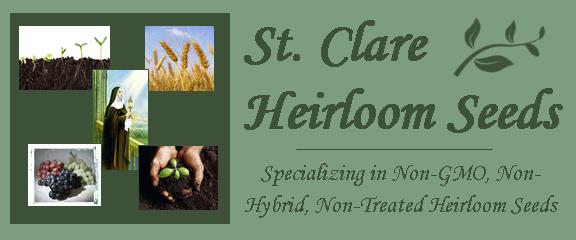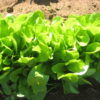Description
Danvers 126 Carrot (a.k.a. Half Long, Danvers Red Core #126)
250 Seeds per pack
Days to Maturity: 65–75 days
Sun Requirements: Full sun; tolerates partial shade.
Botanical Name: Daucus carota
Best Seller!
Originally released in 1947 by the Eastern States Farmers Exchange, Danvers 126 is an improved strain of the older ‘Danvers’ type, which first appeared in catalogs as far back as 1871. This heirloom variety was bred for better uniformity, smoother skin, improved interior color, and higher yields—all while preserving the thick, conical shape and dependable performance that define the Danvers type.
The roots reach 6–8 inches long and up to 2 inches wide at the shoulders, tapering to a blunt tip. Their stocky, broad-shouldered shape makes them ideal for growing in a wide range of soil types, including heavier clay soils that challenge more slender varieties. Danvers 126 stands out for its resistance to cracking and splitting, even with inconsistent watering—making it a reliable performer in less-than-perfect conditions.
The tops grow tall—up to 24 inches—and are especially sturdy, making these carrots easier to pull than many other varieties. Danvers 126 is not only great fresh, but also excels in canning, freezing, and long-term storage. Their sweet, earthy flavor and crisp texture make them a favorite for both raw snacks and cooked dishes.
Tolerant of heat and disease, Danvers 126 is a trusted choice for gardeners and market growers alike. Whether you’re stocking your pantry or growing for market, this adaptable variety earns its place year after year!
Resistance: Cracking, splitting, heat, and common carrot diseases.
Planting Instructions for Danvers 126 Carrot Seeds
When to Plant:
Direct sow Danvers 126 carrot seeds outdoors 2 to 3 weeks before your last expected spring frost, once the soil reaches at least 50°F (10°C). Danvers 126 grows best in cooler temperatures and can be planted again in late summer—about 10 weeks before your first fall frost—for a sweeter, fall-harvested crop. For staggered harvests, continue sowing small batches every 3 to 4 weeks during the main season. Avoid transplanting, as disturbed roots can grow misshapen.
Where to Plant:
Choose a site in full sun with light, loose, stone-free soil. Danvers 126’s broad-shouldered roots perform well even in heavier clay soils where slender varieties often struggle, though raised beds or containers are still helpful in extremely compacted areas. Avoid beds that were recently amended with fresh manure, which can cause forking. A soil pH of 6.0 to 6.8 is ideal. Before planting, loosen the soil at least 12 inches deep and mix in well-aged compost.
How to Sow:
Sow Danvers 126 seeds ¼” deep and 1″ apart in rows spaced 12 to 18 inches apart. The seeds are tiny—try mixing them with sand to distribute them more evenly. Cover with ⅛” to ¼” of sifted compost or fine soil, not coarse dirt. Press down gently and keep the surface moist. For best results, cover rows with burlap or shade cloth until the seeds sprout. Germination may take 7 to 21 days depending on soil temperature and moisture.
Watering:
Danvers 126 seeds need consistent moisture to germinate properly. Use a fine mist spray or a micro-spray system to avoid displacing seeds. Once established, water about 1 inch per week. When carrots begin to size up, increase watering to 2 inches per week to encourage root development. Avoid inconsistent watering, which can cause roots to split. Always water at the soil level—avoid overhead sprinklers that may promote disease.
Fertilization:
Before sowing, mix in 2–3 inches of compost or well-rotted organic matter. Avoid nitrogen-rich fertilizers, which encourage leafy growth at the expense of root development. Once tops are about 4 inches tall, side-dress with a balanced organic fertilizer or compost tea. Avoid adding extra phosphorus unless your soil is deficient, as it may lead to split or misshapen roots.
Mulching:
Once seedlings are 1–2 inches tall, add a layer of mulch to retain moisture, suppress weeds, and keep soil temperatures consistent. Use straw, shredded leaves, or dried grass clippings. Avoid using fresh clippings, which release too much nitrogen too quickly and can lead to forked roots. Let clippings dry for a few days before applying in a thin layer. Mulch also helps keep carrot shoulders from turning green from sun exposure. In early spring, black plastic mulch can warm the soil and speed up germination.
Thinning:
Thin Danvers 126 seedlings when they are 1–2 inches tall to about 2–3 inches apart. Use scissors to snip the tops at soil level rather than pulling, which can disturb nearby roots. For baby carrots, thin to 1 inch apart and harvest small roots early. Proper spacing allows Danvers 126 to grow straight and reach full size.
Pest & Disease Management:
Danvers 126 is vulnerable to the same pests as other carrots, including carrot rust fly, weevils, nematodes, and leafhoppers. To prevent damage, use floating row covers from planting until harvest, and avoid disturbing the foliage when weeding, as its scent can attract pests. Rotate crops yearly, and don’t plant carrots in the same area more than once every three years. Keep the bed free of weeds and debris. For nematodes, avoid planting in infected soil and consider interplanting with French marigolds.
Common Diseases:
This variety may be affected by powdery mildew, leaf blights, and root canker. Ensure good air flow by thinning and avoiding overcrowding. Water early in the day and avoid wetting the foliage. Remove any infected plants immediately to prevent spread.
Harvesting:
Danvers 126 is typically ready to harvest 70 to 75 days after planting. Begin pulling when roots reach 6–8 inches long and about 2 inches wide at the shoulder. A touch of frost will enhance sweetness. Loosen soil with a fork before pulling to avoid breakage. The strong, upright tops of Danvers 126 make it easier to harvest than many other varieties.
Storage:
Store freshly harvested Danvers 126 carrots in the refrigerator for up to two weeks. For longer storage, leave them in the ground under mulch and harvest as needed, provided your soil doesn’t freeze. Alternatively, store in damp sand or sawdust in a root cellar. Danvers 126 is a favorite for long-term storage thanks to its firm texture and resistance to splitting. It also preserves well by freezing, canning, or dehydrating.
Freezing:
Wash, peel, and cut Danvers 126 carrots into slices, coins, or diced pieces. Blanch in boiling water for 2 minutes (or 5 minutes for whole carrots), then transfer immediately to an ice bath. Once cooled, drain thoroughly and spread in a single layer on a parchment-lined baking sheet. Freeze until firm, then pack into freezer bags or containers. Label and store in the freezer for up to 12 months.
Canning:
Use a pressure canner. Wash, peel, and cut Danvers 126 into slices or diced pieces. Raw pack or hot pack (simmer 5 minutes). Fill clean jars with carrots and boiling water, leaving 1 inch headspace. Optional: add 1 tsp canning salt per quart. Remove air bubbles, wipe rims, and seal. Process in a pressure canner based on your altitude. Cool completely and check seals after 24 hours.
Dehydrating:
Wash, trim, and peel if desired. Slice or dice carrots, blanch for 2 minutes, and cool in ice water. Drain and arrange in a single layer on dehydrator trays. Dry at 125°F (52°C) for 4–12 hours, until brittle or leathery. Let cool fully before storing in airtight containers in a cool, dark, dry place.
Seed Saving:
Danvers 126 is a biennial variety. Leave healthy carrots in the ground or replant them to overwinter. In year two, they’ll flower and produce seed. Isolate by at least ½ mile from other carrot types or use row covers to prevent cross-pollination. Collect and store dried seed in a cool, dry place. Properly saved Danvers 126 seeds remain viable for 2–4 years. We offer pre-labeled seed-saving envelopes to help you stay organized.
FAQ:
How long does it take for Danvers 126 carrots to mature?
Danvers 126 carrots typically mature in 65–75 days. Expect best results with spring or fall plantings when temperatures are cooler, as that encourages optimal flavor and growth.
Can I grow Danvers 126 carrots in heavy clay soil?
Yes. Danvers 126 is known for its stocky, broad-shouldered roots, which perform well even in heavier soils where slender varieties often struggle.
What size and shape are Danvers 126 carrots?
These roots grow to 6–8 inches long and up to 2 inches wide at the shoulders, tapering to a blunt tip. Their thick, conical shape makes them easy to harvest and ideal for storage.
Are Danvers 126 carrots good for storage and preserving?
Absolutely. Danvers 126 carrots are prized for their firm texture and excellent storage qualities!
When should I plant Danvers 126 carrot seeds?
Sow seeds 2–3 weeks before your last spring frost or about 10 weeks before your first fall frost. Continue planting every 3–4 weeks for staggered harvests.
Do Danvers 126 carrots resist cracking and splitting?
Yes. One of the standout traits of Danvers 126 is its strong resistance to cracking and splitting, even with inconsistent watering—great for less-than-perfect conditions.
Are Danvers 126 carrots easy to harvest?
Yes. The tops can grow up to 24 inches tall and are especially sturdy, making the carrots easier to pull than many other varieties.
Can I save seeds from Danvers 126 carrots?
Yes, but since they are biennial, you’ll need to overwinter the plants and let them flower in year two. Isolate from other carrot varieties to keep the seed pure.
How well do Danvers 126 carrots handle pests and disease?
Danvers 126 shows strong tolerance to heat and common carrot diseases, making it a reliable choice even in tough conditions. Like all carrots, it benefits from floating row covers, crop rotation, and proper spacing to help prevent pests such as rust flies and leafhoppers.

















Marsha Sparks (verified owner) –
Saving – had 2022 seeds I needed to use.
Carol (verified owner) –
My grandchildren love my canned carrots, I candied them.
Robert Loring (verified owner) –
Very satisfied with all the seeds.
Clint M. (verified owner) –
Excellent germination
Perry Kovash (verified owner) –
Great price
William Tietz (verified owner) –
Can be difficult to germinate.
Sandra (verified owner) –
amazing
Michael H. (verified owner) –
Excellent product and well packaged.
Sarah C. (verified owner) –
Packaging was great! Fast shipping and great items!
Anonymous (verified owner) –
The carrots were large and delicious
Anonymous (verified owner) –
Loved it!
Patricia Stone (verified owner) –
5 star!
Barbara McClure (verified owner) –
Christine Denny (verified owner) –
5 star!
Christina (verified owner) –
Very sweet flavor
Ken (verified owner) –
Elizabeth Richards (verified owner) –
Barbara S. (verified owner) –